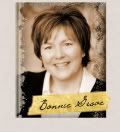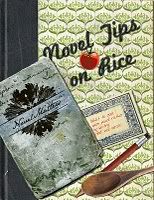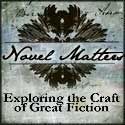 To begin, I would like a show of hands: How many people would like to join me on a teaching conference call to discuss story world further? I would set up a time, you call in online, you will be able to see only me, but we would all be able to talk. I would need at least 15 people or so to make it work. If you would be interested, leave me a short comment.
To begin, I would like a show of hands: How many people would like to join me on a teaching conference call to discuss story world further? I would set up a time, you call in online, you will be able to see only me, but we would all be able to talk. I would need at least 15 people or so to make it work. If you would be interested, leave me a short comment.~
When it comes to story world you can’t escape the word organic. All the elements of our novels need to connect structurally in non-forced ways. Organic means the story is honest, and that the parts have grown naturally, one idea feeding the next until we have a cast of characters living in a believable world and acting truthfully. Whenever we try to push a concept through a cookie cutter template we end up with a generic formula story that lacks vitality and depth. It’s just like every other story. In Part two of this series, we discussed how to ensure connectivity by story world being a physical representation of the conflict between characters.
The second type of conflict that story world demonstrates is the internal conflict of your hero. When you create a character web, you examine in detail how the various characters oppose one another. The only way to do that is to fully grasp what it is the hero wants, and then how the other characters try to prevent the hero (and each other) from getting his or her desire fulfilled.
In the best stories, the hero has a strong desire at the beginning, which changes (is altered) over the course of the novel. The lessons learned through the course of the novel temper the desire in some way (strengthen it, weaken it only to reveal to the hero the stronger desire he/she was suppressing, etc.). For example, the hero of a murder mystery wants to find the killer, but by the end of the story he discovers his greatest desire was to prove to himself that he doesn’t possess the mind and instincts of a killer himself. The story world helps the reader to see the hero’s internal conflict—the war inside.
There are two things to hold in balance while you craft a story world that physically demonstrates your hero’s struggle for what he desires.
First, ensure your story world properly reflects the kind or type of journey your hero partakes of in the novel. This is a question of story structure. You can read more about this in part one of the series. Secondly, focus on building a story world that reflects the hero’s weakness, and need, as well as desire.
For the first part, we are concerned about the overall arch of the hero’s journey, the structure of the novel that takes the hero from the place he or she lives at the beginning of the novel, and moves him to a new moral, ethical, emotional, and sometimes geographic location by the end. In broadest terms, there are two states a hero can live in: freedom or slavery. Your novel is the story of how your hero moves between these two states of being.
There are pits stops along the way, places that appear to be freedom, but are actually deeper slavery, and places that appear to be defeat (or a visit to death), that lead the hero toward freedom. This journey is organically built into every aspect of your story including the story world. The places and things your character encounters are every bit the hero’s journey as are the dialogue, character interaction, backstory, and plot. John Truby says it this way, “The connection between hero and world extends from the hero’s slavery throughout his character arc. In most stories, because the hero and the world are expressions of each other, the world and the hero develop together.”
The second part requires us to consider our hero’s weakness, desire, and need. Story world demonstrates the hero’s weakness in physical ways. Need is personified inside of place. Desire for freedom is sketched out in the landscape of places, and the systems that are in place. It’s Luke Skywalkers home planet Tatoonine, a dessert place where a living must be coaxed from the sand. It’s Harry’s room under the stairs. In Gilead, it is the box on top of the bookcase that John Ames cannot manage to take down by himself. Often our stories begin with the hero living in slavery (to an idea, a system, an unloving family, a haunting mystery, an old hurt, etc.), and has specific weaknesses. The story world, then begins as a place that highlights and exploits that weakness. As the hero fights for the goal, the story world changes to reflect the small success and larger failures along the way, until, finally, the hero reaches the goal (or fails to reach it) and the story world is changed because it.
It’s a dance where the world and the hero are in step, mirroring one another. The reader understands the movement of the novel because it pulses all around.
The take home is that story world is a physical manifestation of the hero’s inner conflict, weakness, need, and desire that changes over the course of the novel.
It’s been a great week on Novel Matters. We’ve gone deep into story world, yet there is much more we could have talked about. My biggest difficulty in crafting this series was all the material I had to leave out of the discussion for the sake of articles that didn't run several thousand words long.
If you would be interested in a live conference call, leave a comment and let me know. If the numbers work out, I’ll schedule the call and we can meet up and talk more.
Meanwhile, what has been the take away for you this week? What have you come across in your reading that touches on story world? Do you have questions?
~
Debbie Fuller Thomas is on She Reads today talking characters and writing what you know. A great article! Check it out.












16 comments:
Yes Please! (waves hand in air). I'd love to learn more about this!
I'm getting what you're saying here in theory, but I'm struggling to translate some of it into the practical realm.
How is need personified in place without being cliche?
How does the world reflect those small successes and failures...again, without being cliched. It's so easy to do this stuff really heavy-handedly and come across poorly.
Have you read Toni Morrison's Beloved? (I've mentally tagged it as one of the Best Books EVER). Each of the four(?) parts starts with the emotional description of the house, ie chapter 1 starts with the words "124 was spiteful. Full of a baby's venom", and so forth.
I'm thinking, if you've read it, you'll tell me I'm answering my own question and to go read it again (which I will do when I've finished Gatsby). But I still want to her what you've got to say. You explain it much better than I can.
Thanks, this is awesome stuff.
Count me in! What an opportunity!
I'm reading this novel (which will remain unnamed because I don't think it is well written). The author does an okay job writing story world. The problem? He has written TOO MANY worlds into his story. It's very confusing to read.
The good thing? I'm learning from Bonnie "how to" and learning from this novel "how not to".
And, can I say it again? YES! I want in on the conference call! :)
I'm rereading Oliver Twist. Oliver is constantly moving between the state of freedom and slavery and the deceptive pits stops are numerous. The story world blatantly reflects his struggle.
I would love to be able to write a story that people will be reading centuries later. Count me in for the conference.
A. Great idea.
B. Interested.
Is that short enough? ;)
~ Wendy
Megan: Writing good fiction is difficult work. The concepts that make sense in our heads get lost before they make it to the page. Most of the concepts I'm talking about are ones I understand very well, but will take me a lifetime to master. We have to remember to be kind to ourselves along the way, and take things slowly.
I haven't read Beloved, it is on my TBR list, though.
Susie: Too many worlds is a common problem in stories that use the hero's journey structure. It is often messy and ends up feeling disconnected. Writing journey stories is very difficult and you need a solid structure to hang the story from before you begin creating all these worlds. Ugh. Sprains my brain.
Marian: Dickens was a master at story world. You can feel the grim on the urchin's hands. Great example!
Wendy: Yes. :)
I would love to participate! Currently I have a first draft of a YA novel and want to make the world live. Also, I'm working on some nonfiction with the need to make a real (as opposed to fictional) world come to life on the page.
Please count me in!
Margaret Snider
Hi, Bonnie, I've been following the Story World discussion on here and would be interested in a conference. Hope enough other people are, too. What a great opportunity to learn more. For free!
Your writings on the subject of story world prompted me to look into John Truby's book on the Anatomy of Story to see what he had to say about it.
I felt like someone had hit me in the stomach when I read the section below. Here's what I wrote to my writer's group a few days ago about my reaction to it:
"I just had a MAJOR set-back in my plot planning last night, due to reading this from John Truby's The Anatomy of Story under "The Arena of the Story":
"Once you have the designing principle and a one-line description of the story world, you must find a single arena that marks the physical boundaries of that world. The arena is the basic space of drama. It is a single, unified place surrounded by some kind of wall. Everything inside the arena is part of the story. Everything outside the arena is not.
"Many writers, especially novelists and screenwriters mistakenly believe that since you can go anywhere, you should. This is a serious mistake, because if you break the single arena of your story, the drama will literally dissipate. Having too many arenas results in fragmented, inorganic stories."
I didn't want to consider Truby's advice, but my heart sank when I read it, because I've been having trouble "feeling" the story world of Colombia. Even though I've studied it for years and am passionate about it, I still feel like a fish out of water when I write about it. The second half of my novel 9the part which takes place in Colombia) has been much harder than the first half to plot, and the unfamiliar story world could be the problem. I really do see the wisdom of sticking to one arena, especially an arena that one knows. I have had four arenas: The Pocono mountains of Pennsylvania for the first half of the book (which was near where I lived for several years), then an orphanage in Colombia, then the coffee plantation in Colombia, and finally, the rain forest of Colombia.
Too much, I'm thinking. Too many arenas, resulting in a "fragmented, inorganic story."
(Groan.)
Do you realize how much work it's going to take, to re-plot the second half of my novel?
---end of email to critique group--
However, after reading what you had to say about the author you're currently reading, Susie, I decided I'm headed in the right direction!
Marcia
That would be great!
Hey Marcia, wanna hear something funny?
I've been diligently ignoring Truby for all these months, but when I read your quote I had a Suddenly! moment. Suddenly it all makes sense.
So...thanks.
Gonna have to go buy it this afternoon : )
Marcia: I'm glad you're in for a call. I hope you're not feeling discouraged. Remember the heart of your story and keep telling it. There is lots to hold in balance when writing a novel, but there is no one way to achieve it. The best advice in the world can really only be general advice, and in the end it is YOUR story and you will be able to tell it the way you want to tell it. Take heart! I know how hard you've been working on your novel, and I wouldn't dream of suggesting you need to replot the book again. Be creative as you problem solve. There are lots and lots of ways to come at the issues you're facing. Think on it, be outside the box, and have faith in your hard work!!
Word Wise Pro: Great! Thanks!
Margaret: Great! And thanks for the reminder that these kinds of structural skills apply as much to non-fiction as they do to fiction.
I genuinely hope this gets through. Yesterday I wrote lots and it went into cyberspace. Anyone out there seen it? Tell it to come home.
I would like to be in on the conference.
This has been very helpful, Bonnie. Encouraging that I laid out a rich story world and am able to explain the deeper meanings but never knew the label. Now that I do know I am able to layer it even deeper. Thanks! Talk to you soon.
Hmmm. Now I'm really in a quandary about whether I should consolidate my story world. Yesterday evening I'd decided to go with the Big Change, even wrote some of it up. But today I haven't run into one person who considers it's a good idea (except for my mother, who thinks anything I do is fine).
Oh, and Bonnie, I've never done a conference of this type before. Do I need Skype or anything?
Marcia
Henrietta: Readers and writers know much of this instinctively. It's always nice when we can arrange our thoughts like so many ducks. :)
Marcia: No, you don't need skype. I'm going to arrange it through a free conference call service.
I think we have about 10 people who are interested in joining. That's enough for a start. We will likely pick up a few along the way.
Now to find a time when everyone can get together!
Completely agree with your point about worlds. All stories are the same ( http://www.clickok.co.uk/index4.html ), so what makes them original is the worlds, characters and motivations.
Post a Comment